
FIGMA
Wireframing, Prototyping, LO, MID, HI-FI Mapping, UI components
MAZE
Usability Test
MURAL/Hotjar
Brainstorming, mapping and team collaboration
TEAMS/Zoom/Slack
Interviews, Team meetings
The design process for “AI Toolbox,” an all-in-one AI tool application, follows a user-centered methodology, ensuring that the product not only meets the users’ needs but also enhances their overall experience.
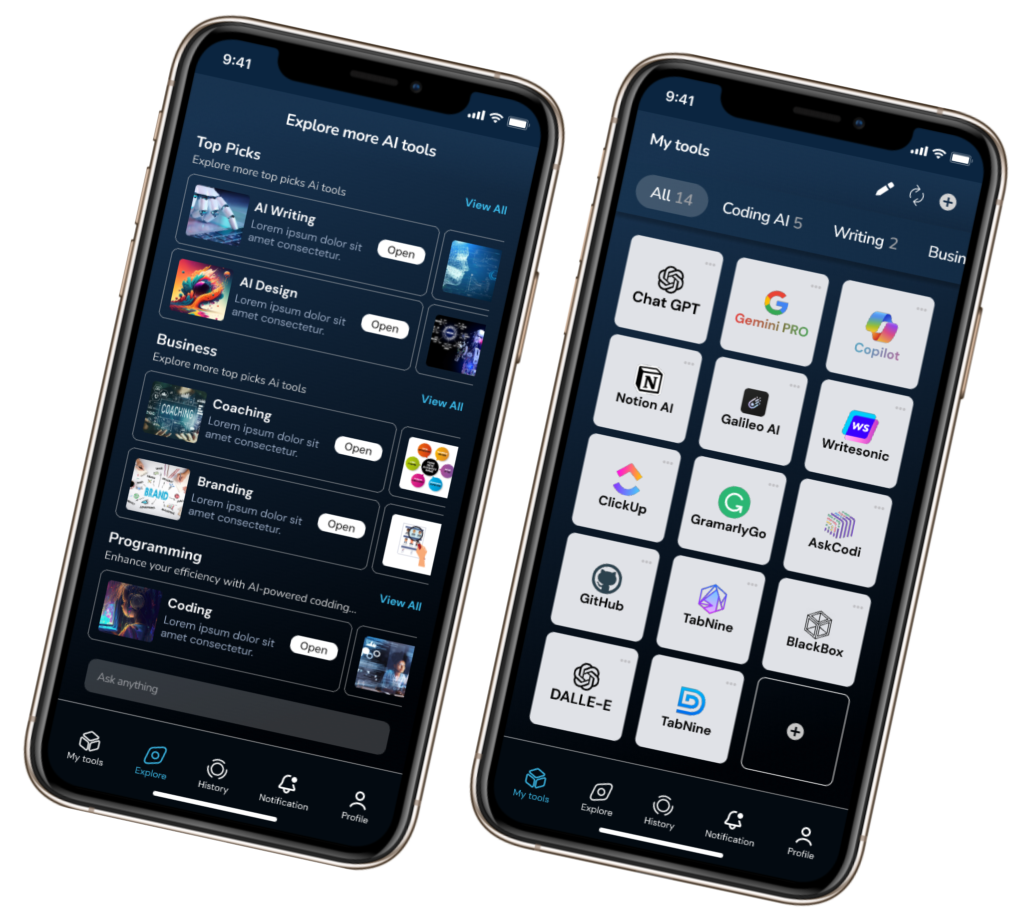

Wireframing, Prototyping, LO, MID, HI-FI Mapping, UI components
Usability Test
Brainstorming, mapping and team collaboration
Interviews, Team meetings

AI Toolbox is a comprehensive, user-friendly application designed to streamline the use and access of various artificial intelligence (AI) tools through a single platform. This innovative solution aims to address the inefficiencies associated with using multiple AI applications by offering a unified interface where users can explore, manage, and utilize a wide range of AI tools tailored to their unique needs.




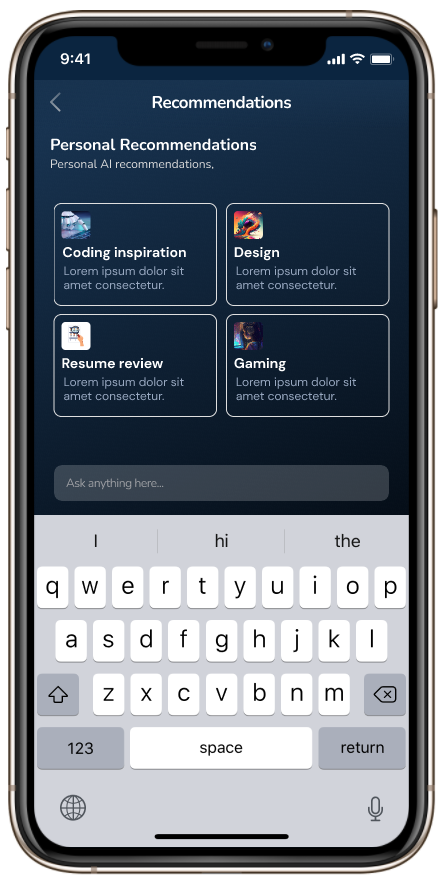
Unified AI Tools Platform: Centralizes access to a diverse array of AI tools for business, coding, writing, programming, language learning, and more, eliminating the need to switch between different apps or websites.
Customizable Tool Lists: Users can personalize their experience by adding favorite tools to the “My Tools” section, ensuring quick access to frequently used resources.
Advanced Exploration: The “Explore” feature allows users to discover new AI tools based on curated recommendations, top picks, and categorized listings, fostering exploration and discovery.
Comprehensive Tool Management: Offers the ability to manage tools effectively, including options to delete, archive, save as favorites, rename, and share, coupled with intuitive navigation for an enhanced user experience.
Personalized User Experience: Features like personal recommendations, customizable themes (dark or light mode), language and region settings, and the ability to manage notifications and privacy settings tailor the app to meet individual preferences.
Interactive Engagement: Users can engage with AI tools directly within the app, with functionalities such as chatting with AI, copying, regenerating responses, and providing feedback to ensure a seamless interaction.
History & Notifications: Keeps users informed and organized with a dedicated history section for chat logs and a notifications tab for updates on new AI tools, billing, and other relevant alerts.
Flexible Subscription Plans: Offers various subscription plans (Basic, Pro, Ultra) with options for monthly or yearly payments, including a 7-day free trial to explore the app’s full capabilities before committing.
PROBLEM STATEMENT & GOALS
Users currently have to navigate multiple applications or websites to access different AI tools, leading to a fragmented and inefficient user experience.
To consolidate various AI tools into a single, user-friendly application that caters to diverse needs, thereby enhancing efficiency and user satisfaction.
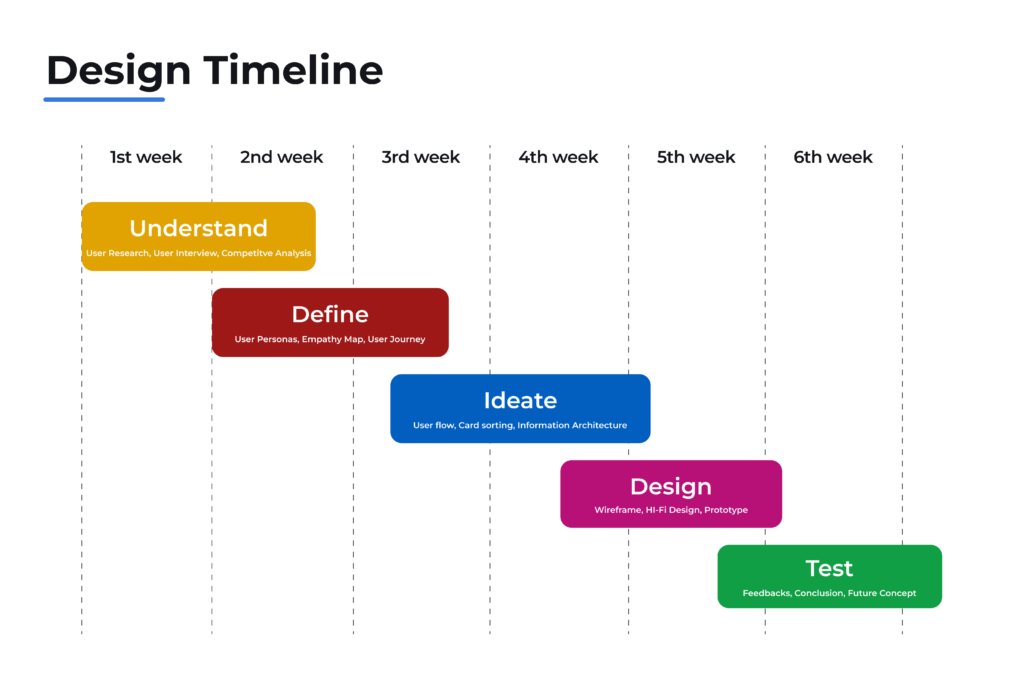
The Team
Designed for a wide range of users, from professionals and students to hobbyists and tech enthusiasts, who seek an efficient, streamlined way to access and leverage the power of artificial intelligence in their daily tasks and projects.





The research phase for the “AI Toolbox” project is a critical step in understanding the needs, behaviors, and frustrations of potential users, as well as identifying opportunities within the market. This phase can be divided into several key components, each aimed at gathering insights that will inform the design and development of the application. Here’s how the research phase might unfold:
User research aims to understand the users’ needs, preferences, and pain points when using AI tools. This can involve a variety of methods:
Surveys and Questionnaires: Distributed online to reach a broad audience, these tools can gather quantitative data on user preferences, behaviors, and the types of AI tools they use.
Interviews: Conducting one-on-one interviews with potential users to gain deeper insights into their experiences, needs, and frustrations with current AI tool solutions.
Focus Groups: Bringing together small groups of target users to discuss their needs and preferences, providing a range of perspectives and insights.
A thorough analysis of the existing market helps identify competitors, potential gaps, and opportunities for differentiation. This includes:
Competitive Analysis: Examining direct and indirect competitors, their offerings, user interfaces, and user reviews to understand what works well and where there are shortcomings.
Trend Analysis: Identifying current and emerging trends in the use of AI tools across different industries, which can inform the development of new features or the targeting of niche markets.
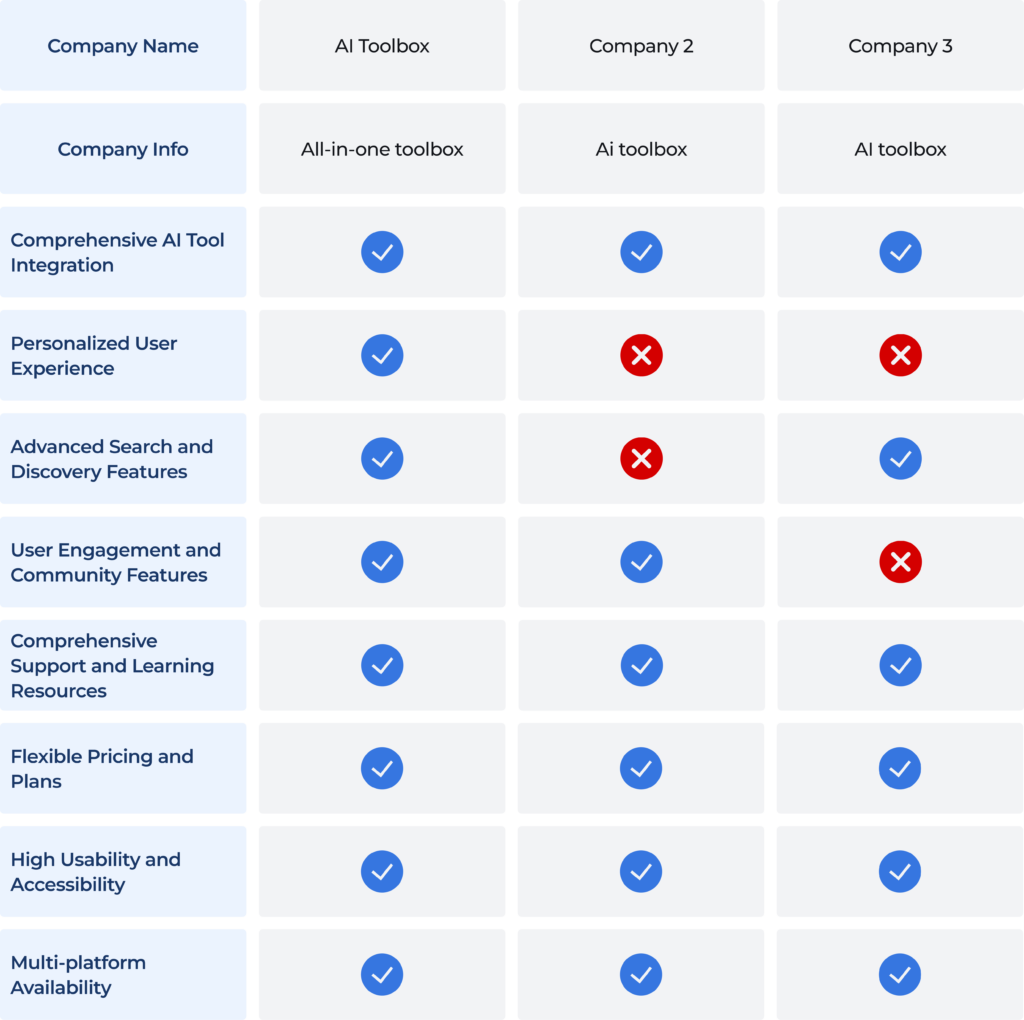
Diverse AI Tools: Offer a wide range of AI tools covering different categories such as productivity, creativity, coding, writing, and analytics.
Seamless Integration: Ensure users can access and use these tools within your app without needing to navigate to external sites or platforms.
Customizable Tool Lists: Allow users to add, organize, and save their favorite AI tools for easy access.
Personal Recommendations: Implement AI-driven suggestions that recommend tools based on the user’s past activities, preferences, and needs.
Intelligent Search: Provide a powerful search functionality that enables users to find tools based on keywords, categories, or even based on the type of task they want to accomplish.
Curated Collections: Offer collections of tools curated for specific tasks, industries, or user levels (beginner, intermediate, advanced).
Ratings and Reviews: Enable users to rate and review tools, fostering a sense of community and helping others make informed decisions.
Community Forums: Create spaces for users to discuss tools, share experiences, and offer help to one another.
Tutorials and Guides: Provide users with resources to learn how to effectively use the tools, enhancing their overall experience and satisfaction.
Responsive Support: Offer multiple channels for support, including chat, email, and a comprehensive FAQ section, ensuring users can easily find help when needed.
Data Protection: Clearly communicate how user data is used and protected, and implement robust security measures to safeguard user information.
Customizable Privacy Settings: Allow users to control what information is shared and who it’s shared with.
Variety of Plans: Offer a range of subscription plans (e.g., Basic, Pro, Ultra) to cater to different user needs and budget constraints.
Free Trial: Provide a free trial period to let users explore the app and its features before committing to a purchase.
Intuitive Design: Ensure the app is easy to navigate and use, with clear labels, consistent icons, and a responsive layout.
Accessibility Features: Incorporate features that make the app usable by as wide an audience as possible, including those with disabilities.
Cross-platform Compatibility: Make the app available on multiple platforms (iOS, Android, Web) to ensure users can access it from any of their devices.
To gather quantitative data for the “AI Toolbox” project, crafting focused questions that can be quantitatively analyzed is crucial. Below are five quantitative research questions along with hypothetical answers based on a survey of potential users. These responses are accompanied by observations to provide insights into user needs and preferences.
Options:
Options:
Hypothetical Answers:
Data Analysis: 40%
Content Creation: 55%
Email Automation: 30%
Social Media Management: 45%
Programming Assistance: 25%
Others: 5%
Observations: Content Creation and Social Media Management tools are among the most used, suggesting that “AI Toolbox” should prioritize integrating tools from these categories to attract the majority of its target user base.
Options:
Hypothetical Answers:
Very Satisfied: 15%
Satisfied: 50%
Neutral: 20%
Dissatisfied: 10%
Very Dissatisfied: 5%
Observations: While a majority of users are satisfied with their current AI tools, there’s a noticeable portion that is neutral or dissatisfied, highlighting an opportunity for “AI Toolbox” to differentiate by addressing common pain points.
Options:
Hypothetical Answers:
Very Important: 45%
Somewhat Important: 35%
Neutral: 15%
Not Very Important: 4%
Not at All Important: 1%
Observations: A clear majority finds the concept of an all-in-one AI tool platform important, reinforcing the value proposition of “AI Toolbox.” This indicates a strong market desire for a unified solution.
Options:
Hypothetical Answers:
Pay-per-use: 10%
Monthly Subscription: 40%
Annual Subscription: 35%
One-time Purchase: 10%
No Preference: 5%
Observations: Monthly and annual subscriptions are the preferred models, suggesting flexibility in payment plans could be a key feature for “AI Toolbox.” Offering both options could cater to short-term and committed users alike.
High Engagement: The frequent use of AI tools suggests a tech-savvy target audience that relies heavily on AI for daily tasks.
Demand for Variety: The diverse use of AI tools across categories indicates a need for “AI Toolbox” to offer a wide range of tools to appeal to different user needs.
Opportunity for Improvement: The presence of dissatisfaction among current AI tool users presents an opportunity for “AI Toolbox” to offer better solutions.
Market for All-in-One Solution: The strong interest in an all-in-one platform highlights a significant market opportunity for “AI Toolbox.”
Subscription Model Preferences: The preference for subscription models suggests users are accustomed to and comfortable with recurring payments for valuable tools.
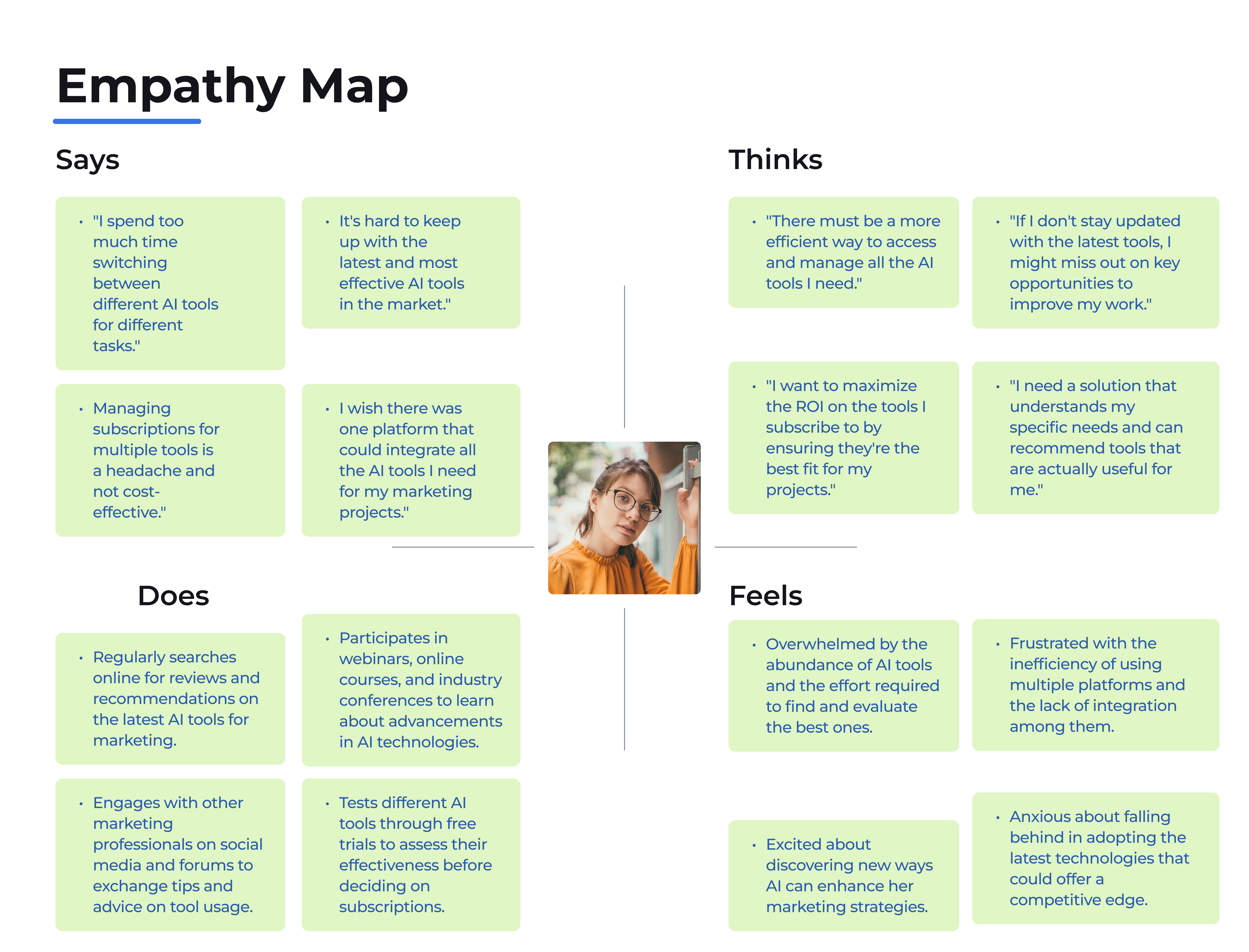
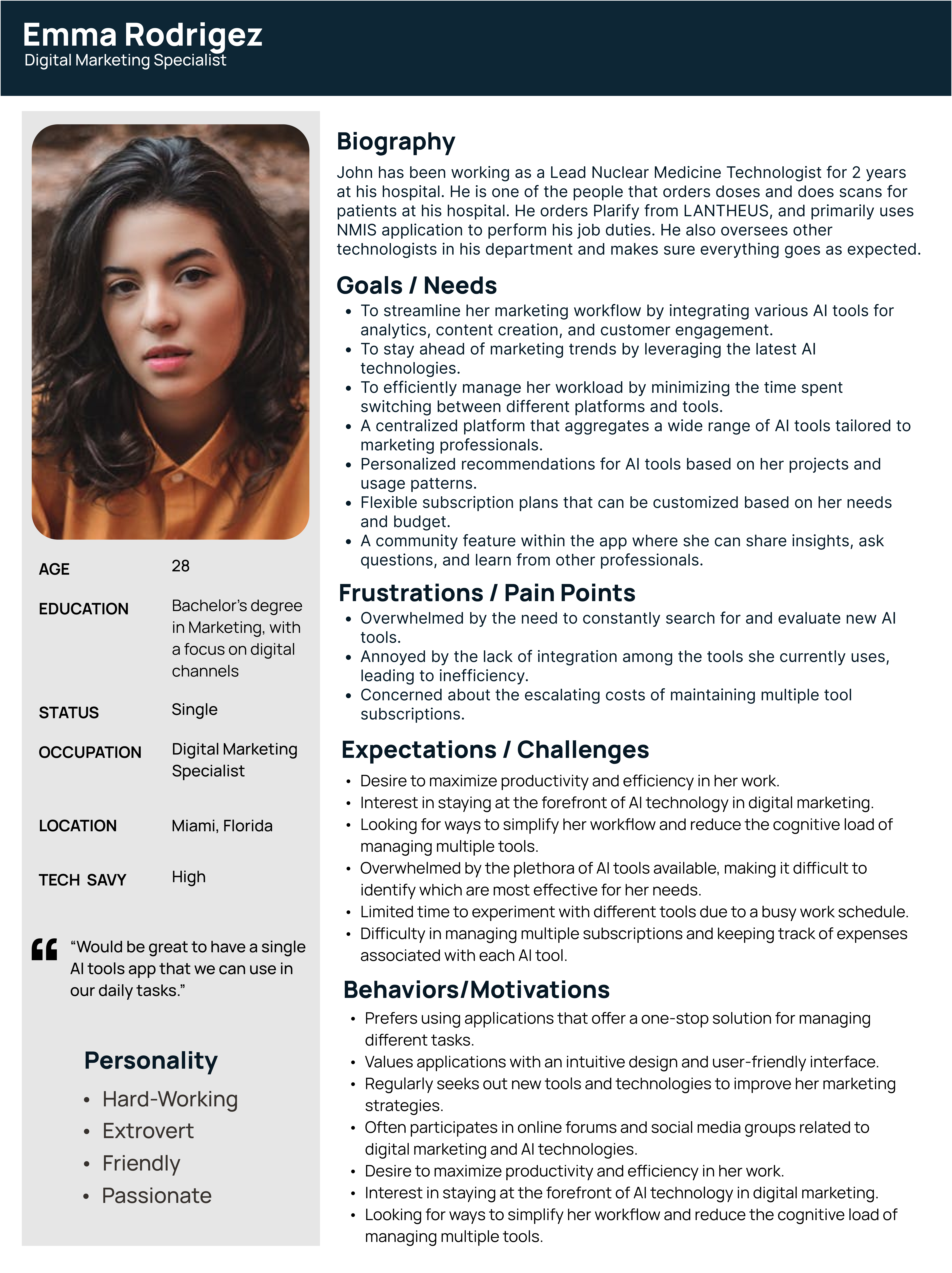
Goal: Creating a User Journey Map for Emma Rodriguez, our digital marketing specialist per–on a for the “AI Toolbox,” allows us to visualize her interactions with the application from initial awareness to regular use. This journey map helps identify key touchpoints, potential frustrations, and opportunities to enhance Emma’s experience.
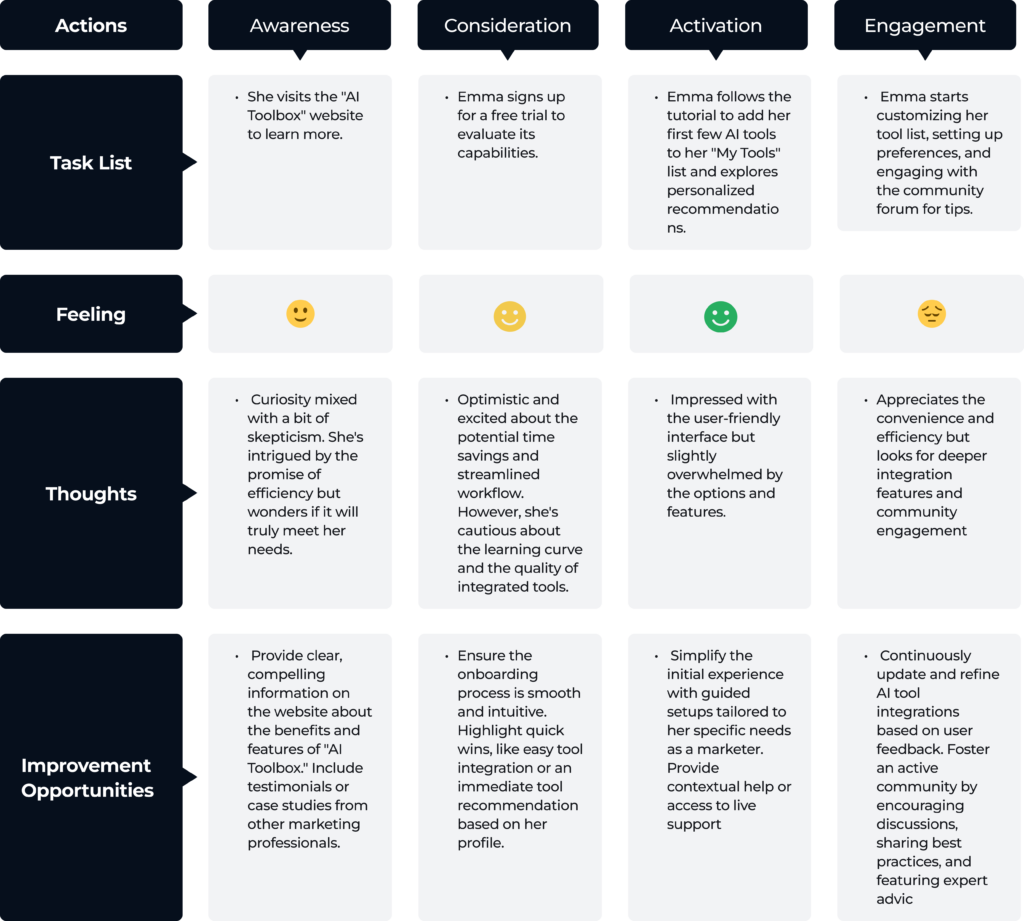
Description: Users frequently switch between multiple AI tools for different tasks, leading to a fragmented workflow and inefficiencies. This not only disrupts their concentration but also results in time lost managing and navigating between platforms.
Impact: This fragmentation hinders productivity and can lead to frustration, as users must remember the intricacies of each tool and deal with multiple user interfaces, login credentials, and billing systems.
Solution: “AI Toolbox” can address this pain point by providing a unified platform that integrates a wide range of AI tools. This would allow users to access all the tools they need from a single interface, streamlining their workflow and saving valuable time.
Description: With the rapid proliferation of AI tools, users find it challenging to stay updated on the latest tools and technologies. Evaluating each tool’s effectiveness and relevance to their needs is time-consuming and often overwhelming.
Impact: This challenge can lead to decision paralysis, where users stick with familiar tools rather than exploring potentially more efficient alternatives. It can also result in the underutilization of AI technologies that could significantly enhance productivity and outcomes.
Solution: Implementing personalized recommendations and curated lists within “AI Toolbox” can help alleviate this pain point. By analyzing users’ behaviors, preferences, and tasks, the platform can suggest tools that are likely to be of high value, making discovery and evaluation much easier.
Description: Managing multiple subscriptions for different AI tools is cumbersome and can quickly become expensive. Users are concerned about the cumulative cost and the administrative burden of keeping track of various subscription plans, renewal dates, and billing cycles.
Impact: This can lead to budgetary constraints and limit users’ ability to access and leverage the best AI tools. It may also deter users from trying out new tools due to the additional perceived financial risk.
Solution: “AI Toolbox” can introduce a consolidated subscription model that offers access to a suite of AI tools under a single subscription fee. Providing flexible payment plans, such as monthly or annual options, can accommodate different budgetary preferences. Additionally, offering a trial period or a freemium model for certain tools can reduce the financial risk for users looking to explore new options.
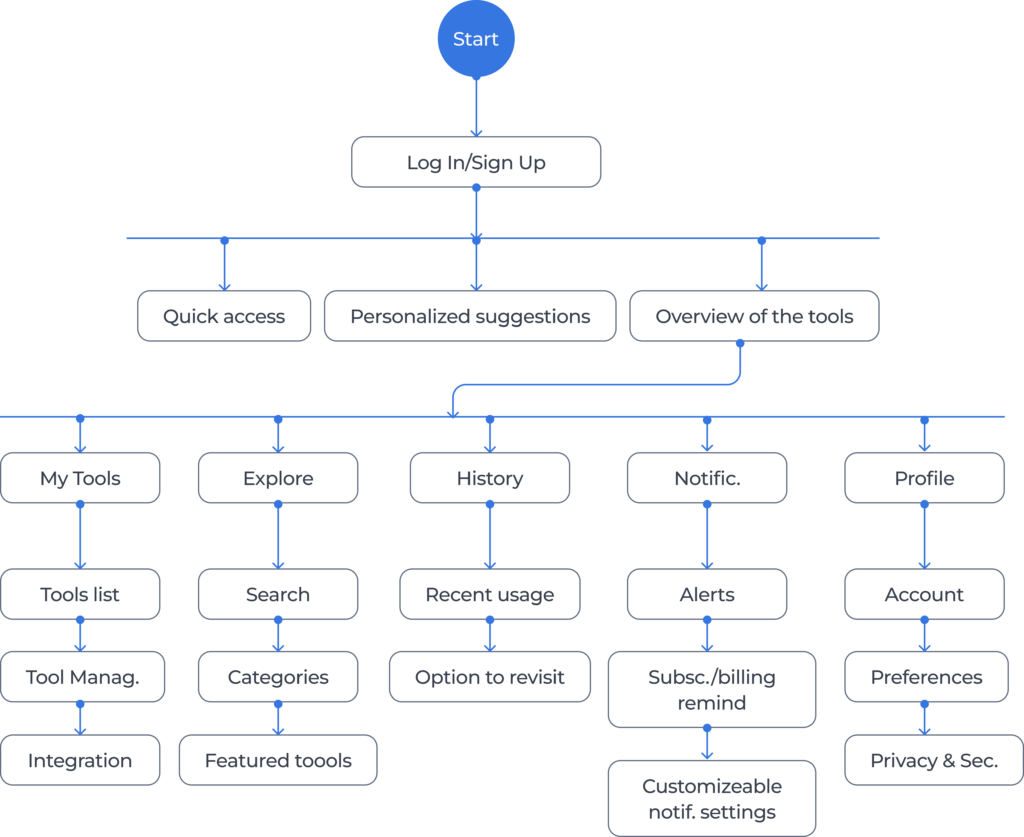
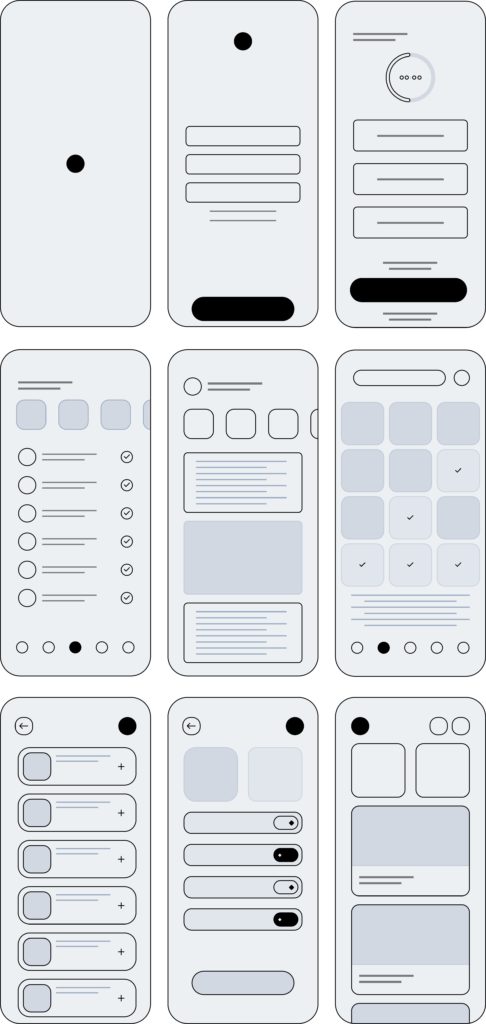
Objective: To maintain a record of user interactions within each AI tool, allowing users to revisit previous sessions, recover valuable insights, or continue conversations.
Key Components:
Comprehensive Chat Logs: Each tool’s chat history is saved and easily accessible, enabling users to review past interactions, copy information, or reference earlier insights.
Organization and Searchability: Users can organize chat histories by date, tool, or project and search within their histories for specific information, making it easy to find relevant past conversations.
Privacy and Control: Users have full control over their chat histories, with options to delete individual entries or entire histories if desired, ensuring privacy and data protection.
Objective: To enable users to discover and access a wide range of AI tools tailored to their specific needs and interests.
Key Components:
Dynamic Search and Filtering: Users can easily search for AI tools by name, category, or use case. Advanced filtering options allow users to narrow down search results based on criteria such as popularity, user ratings, or recent updates.
Personalized Recommendations: Leveraging user data and machine learning algorithms, “AI Toolbox” suggests AI tools that match the user’s behavior, preferences, and past tool usage, encouraging exploration of new tools that can enhance their workflow.
Curated Lists: Experts and community members curate lists of tools for specific industries, tasks, or trending topics, helping users to find tools vetted by others with similar needs.
Objective: To provide users with a personalized dashboard where they can save, organize, and quickly access their favorite or frequently used AI tools.
Key Components:
Customizable Tool Lists: Users can create and name their own lists (e.g., “Content Creation,” “Data Analytics”) to organize tools in a way that mirrors their workflow.
Quick Access: From the “My Tools” section, users can launch tools directly, view recent activity, and access tool settings or additional information without navigating away from their dashboard.
Tool Management: Features include the ability to add or remove tools, reorder them within lists, and share tools or lists with colleagues or team members, enhancing collaboration.
Users can create personalized lists of their favorite tools, organize them as per their workflow needs, and access them quickly.
Tool Ratings and Feedback: Integrates a system for users to rate tools and leave feedback, aiding in the community-driven evaluation of tool effectiveness and user satisfaction.
Utilizes user behavior and preferences to suggest relevant AI tools, helping users discover tools that match their specific needs.
Curated Tool Collections: Features collections of tools organized by use case, industry, or popularity, making it easier for users to find tools that have been vetted for quality and relevance.
"AI Toolbox has revolutionized the way I work with AI tools. The ability to access and manage all my tools in one place has saved me hours each week. It's incredible how much more productive I've become."
Lorena Bake
"The UI/UX of AI Toolbox is top-notch. Everything is so intuitive and easy to navigate. I was able to find and start using new tools within minutes of installing the app. It's clear a lot of thought went into the design."
Helen Lori
"I was pleasantly surprised by the personalized recommendations in AI Toolbox. It's introduced me to tools I didn't even know I needed but now can't live without. The app seems to understand my needs better than I do!"
Adam Brown
"Switching between different apps for AI tools was a major time sink for me. AI Toolbox has eliminated this hassle entirely. The efficiency of having everything in one place is a game-changer for my daily workflow."
Lorena Bake
"The community features in AI Toolbox have been invaluable. Being able to share insights and get tips from other users has not only helped me make the most of the tools but also fostered a sense of belonging in a professional community."
Helen Lori
"Anytime I've had a question or encountered an issue, the support team has been quick to respond and incredibly helpful. It's refreshing to see a company that truly cares about its users."
Adam Brown
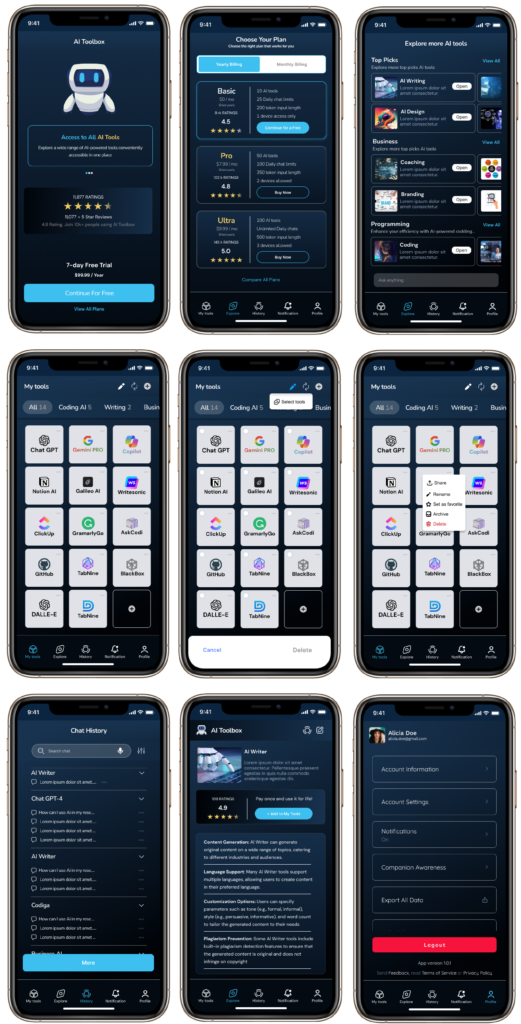
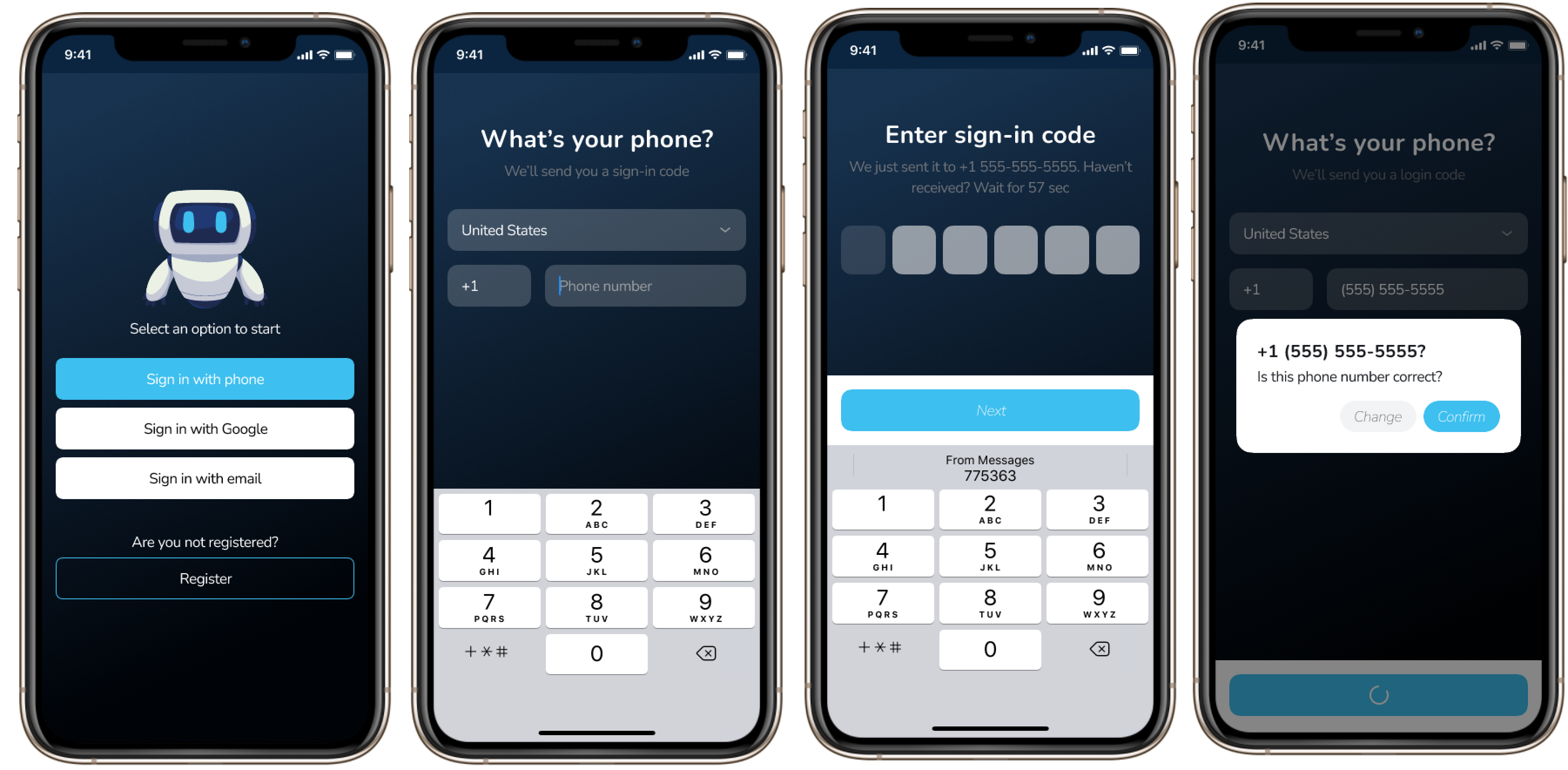
To gather quantitative data for the “AI Toolbox” project, crafting focused questions that can be quantitatively analyzed is crucial. Below are five quantitative research questions along with hypothetical answers based on a survey of potential users. These responses are accompanied by observations to provide insights into user needs and preferences.
The emphasis on features like “Explore More AI Tools,” “My Tools,” and “Chat History” underscores the importance of a user-centric approach in designing applications. Personalization, ease of use, and efficient management are pivotal in enhancing user experience.
Users are looking for tools that not only streamline their workflow by integrating multiple functionalities into a single platform but also offer personalized recommendations and organizational features that align with their specific needs and preferences.
Feedback indicates that users value platforms that not only serve as tools but also as communities. Features that encourage sharing, collaboration, and communication among users can significantly enhance the value proposition of “AI Toolbox.”
The technology landscape, especially in AI, evolves rapidly. Continuous research, user feedback collection, and agility in development are essential for staying relevant and meeting users’ changing needs.
As users entrust more of their work and data to “AI Toolbox,” ensuring the scalability of the platform and the security of user data becomes increasingly important.